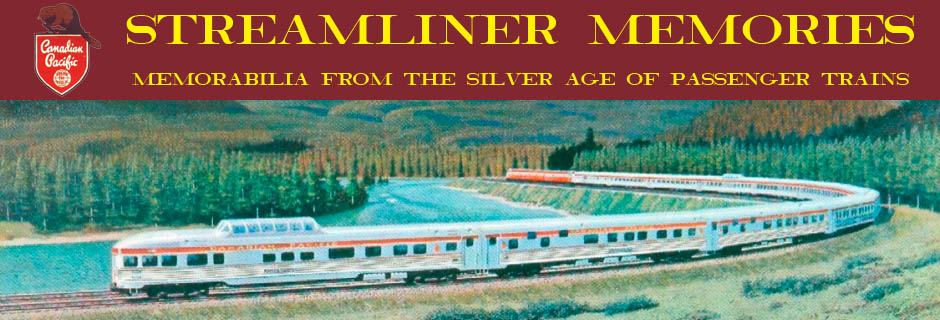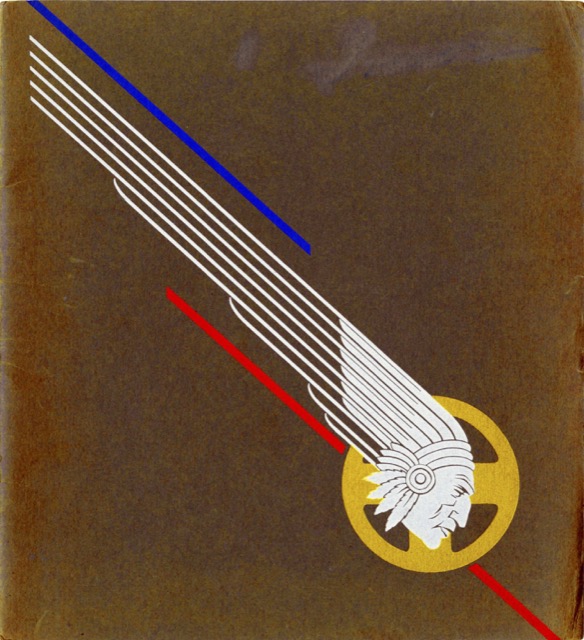Now that I am finished with the somewhat distasteful task of posting what Bronze Age (Amtrak & VIA) memorabilia I have in my collection, I can get back to what is left of my Silver and Golden Age collection. Today, I am pleased to present a booklet about the original Santa Fe Super Chief. This is on the cusp of the Silver Age, as the train used heavyweight passenger cars but was powered by a Diesel predecessor of GM’s famous E units.
Printed on heavy, creamy yellow paper within an oversized chocolate brown cover, this booklet certainly befits the first-class train that the Super Chief aspired to be. The inside pages are decorated with a brightly colored, Indian-inspired map of the route from Chicago to Los Angeles that, unusually, is oriented with the south towards the top instead of the bottom (i.e., east is on the left and west is on the right).
The booklet notes that the Super Chief left Chicago on Tuesdays and Los Angeles on Fridays. It was the first train to connect Chicago with the coast in 39-3/4 hours, beating the City of Los Angeles by a day. “Ten dollars extra fare,” the booklet concludes; who today wouldn’t pay $10 to ride the Santa Fe Super Chief? Of course, $10 in 1936 is about $175 in today’s dollars.
In fine print, the last inside page says, “15M Reprint 6-1-36.” The train was inaugurated on May 12, 1936 with a capacity of about 100 passengers. It is likely that the first printing of this booklet was also a run of 15,000, all of which must have been given away in a period of time during which the train could have carried only about 600 riders. The huge print overrun suggests that Santa Fe considered this train to be primarily a way to get general patrons interested in its other trains.

